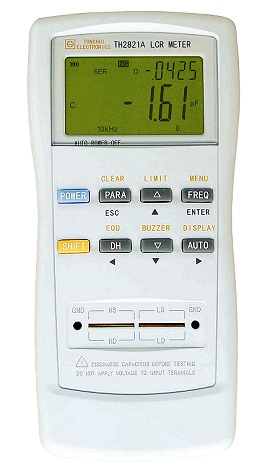I was in doubts where exactly to start this topic, it could be part of Coils thread the same as here as it deals equally with coils too.
The other day i obtained handheld digital LCR Meter TH2821A .

New tool for me. So far i had only multimeter lookalike L meters with ranges 2mH to 20mH.
But this one, the TH2821A, is somewhat more serious tool.
It can measure L, C, R, Z and Q at coils.
It can measure at 100Hz, 120Hz, 1kHz and 10kHz.
So i was thinking to perform series of measurements on few coils that i already have.
One coil is Detech 38x30cm (15x12") coil for MXT | MXT PRO / 300 | DFX / 300 |V3 V3i / Spectra | M6 models
Another coil is Black Max coil which came with White's 6000 Pro Xl.
Both original coils, both well known, both perfect for learning and mastering the new LCR meter.
...
So i performed series of measurements. And i got somewhat confusing results at the end!?
If i was not knew from before the real specs of those two coils; how could i tell which one of measured result is accurate?
This is a question for everybody interested. Also a good situation for educational exercise.
Ok... c'mon brainstormers! Let me hear you opinions!
Here is the table with results:
The other day i obtained handheld digital LCR Meter TH2821A .

New tool for me. So far i had only multimeter lookalike L meters with ranges 2mH to 20mH.
But this one, the TH2821A, is somewhat more serious tool.
It can measure L, C, R, Z and Q at coils.
It can measure at 100Hz, 120Hz, 1kHz and 10kHz.
So i was thinking to perform series of measurements on few coils that i already have.
One coil is Detech 38x30cm (15x12") coil for MXT | MXT PRO / 300 | DFX / 300 |V3 V3i / Spectra | M6 models
Another coil is Black Max coil which came with White's 6000 Pro Xl.
Both original coils, both well known, both perfect for learning and mastering the new LCR meter.
...
So i performed series of measurements. And i got somewhat confusing results at the end!?
If i was not knew from before the real specs of those two coils; how could i tell which one of measured result is accurate?
This is a question for everybody interested. Also a good situation for educational exercise.
Ok... c'mon brainstormers! Let me hear you opinions!
Here is the table with results:




Comment